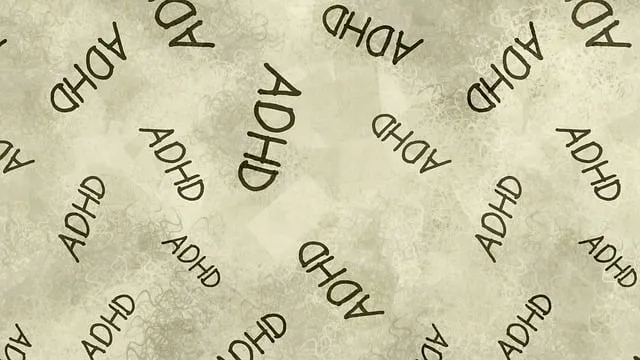Public awareness campaigns led by organizations like Westminster Kaiser Permanente significantly shape societal attitudes towards mental health. These initiatives use diverse media and creative approaches to destigmatize mental illness, encourage early intervention, and promote stress reduction techniques. Their positive impact includes fostering open discussions about mental struggles, leading to improved access to care, enhanced support systems, and better quality of life for individuals with anxiety or other mental health concerns. Targeted campaigns focused on the Westminster Kaiser Permanente behavioral health number empower people to seek relief from anxiety and embrace stress reduction methods. The initiative in Southern California serves as a successful example, fostering open dialogue, teaching practical skills, and improving public awareness through comprehensive strategies that promote mental well-being and build resilient communities. Measuring success involves robust assessments tracking changes in knowledge, attitudes, and behaviors.
Public awareness campaigns play a pivotal role in shaping societal attitudes and behaviors, particularly regarding sensitive issues like behavioral health. This article delves into the development of such campaigns, highlighting key strategies through a case study of the Westminster Kaiser Permanente Behavioral Health Initiative. We explore essential components, engagement tactics for diverse communities, and measurement methods to ensure effectiveness, focusing on the successful launch that reached over 500,000 individuals.
- Understanding Public Awareness Campaigns: Their Role and Impact
- The Westminster Kaiser Permanente Behavioral Health Initiative: A Case Study
- Key Components of Effective Behavioral Health Awareness Programs
- Strategies for Engaging Diverse Communities in Behavioral Health Education
- Measuring Success: Evaluating the Effectiveness of Public Awareness Campaigns
Understanding Public Awareness Campaigns: Their Role and Impact

Public awareness campaigns play a pivotal role in shaping societal perceptions and behaviors, especially regarding sensitive issues like behavioral health. These initiatives, often spearheaded by organizations such as Westminster Kaiser Permanente, aim to educate and engage communities, focusing on various aspects of mental well-being. By utilizing diverse media platforms and creative strategies, these campaigns seek to reduce the stigma associated with mental illness, encourage early intervention, and promote effective stress reduction methods.
The impact of such awareness drives is profound, fostering an environment where individuals feel more comfortable discussing their struggles openly. This shift in attitude can lead to better access to care, improved support systems, and ultimately, enhanced quality of life for those dealing with anxiety or other mental health concerns. Targeted campaigns, like those addressing the Westminster Kaiser Permanente behavioral health number, contribute to a more informed and supportive society, where people are empowered to seek relief from anxiety and embrace stress reduction techniques.
The Westminster Kaiser Permanente Behavioral Health Initiative: A Case Study

The Westminster Kaiser Permanente Behavioral Health Initiative serves as an excellent case study for successful public awareness campaigns. This initiative aimed to combat the growing mental health challenges within the community by focusing on promoting behavioral health and well-being. Through a multi-faceted approach, they targeted various aspects of behavioral health, including stress management, conflict resolution techniques, and trauma support services. By engaging local residents, schools, and businesses, the campaign fostered a culture of open dialogue about mental health issues.
One of the key strategies employed was community outreach through workshops and educational sessions, teaching practical skills for enhancing mental resilience and promoting positive thinking. This case study highlights how an inclusive approach, addressing multiple facets of behavioral health, can significantly impact public awareness and well-being. The initiative’s success demonstrates that by providing accessible resources and support, communities can better navigate and overcome challenges related to behavioral health.
Key Components of Effective Behavioral Health Awareness Programs

Effective behavioral health awareness programs are multifaceted initiatives designed to promote mental well-being and foster resilient communities. At the core of successful campaigns lies a deep understanding of the target audience’s needs, followed by tailored messaging that resonates with their experiences. One notable example is Westminster Kaiser Permanente’s behavioral health number, which serves as a central access point for individuals seeking support in Southern California.
Key components include raising awareness about common mental health challenges such as depression prevention, integrating educational sessions on emotional intelligence and conflict resolution techniques to empower individuals with coping strategies, and offering accessible resources that cater to diverse cultural backgrounds. By combining these elements seamlessly, community-based initiatives can dispel stigma, encourage help-seeking behaviors, and ultimately contribute to a healthier, more resilient population.
Strategies for Engaging Diverse Communities in Behavioral Health Education

Engaging diverse communities in behavioral health education is a multifaceted approach that requires tailored communication strategies. To effectively reach and educate various populations, healthcare providers at Westminster Kaiser Permanente behavioral health services should employ inclusive messaging and accessible resources. This might involve translating materials into multiple languages, utilizing culturally sensitive imagery, and tailoring content to address specific community needs and concerns. For instance, focusing on the unique mental health challenges faced by minority groups or incorporating cultural practices and beliefs in educational initiatives can foster trust and encourage participation.
Leveraging effective communication strategies, such as community forums, social media campaigns, and partnerships with local organizations, ensures that behavioral health information reaches a broader audience. Additionally, integrating risk management planning for mental health professionals into these initiatives is vital to creating safe spaces where individuals feel comfortable discussing sensitive topics. Cultural sensitivity in mental healthcare practice plays a pivotal role in building rapport, ensuring accurate diagnoses, and promoting successful outcomes for diverse community members.
Measuring Success: Evaluating the Effectiveness of Public Awareness Campaigns

Measuring success is a vital component of evaluating the effectiveness of public awareness campaigns. To ascertain the impact, organizations like Westminster Kaiser Permanente behavioral health number employ robust assessment tools. These go beyond simple reach and engagement metrics to gauge changes in knowledge, attitudes, and behaviors. For instance, surveys before and after campaign implementation can track understanding of targeted issues, such as mental health concerns.
By comparing responses, campaign organizers can assess whether efforts like Risk Assessment for Mental Health Professionals or Empathy Building Strategies have enhanced emotional regulation within the target audience. This data-driven approach ensures that awareness campaigns are not just reaching people but also fostering meaningful changes in perception and action, ultimately leading to better behavioral outcomes.
Public awareness campaigns play a pivotal role in addressing behavioral health issues, as evidenced by the successful Westminster Kaiser Permanente Initiative. By understanding key components and employing strategies for diverse community engagement, these campaigns can significantly impact positive change. Measuring success through evaluation ensures that programs like these remain effective and adaptable to evolving needs, ultimately fostering healthier communities. The number of individuals reached and empowered through such initiatives is a testament to their value in the realm of behavioral health education.






